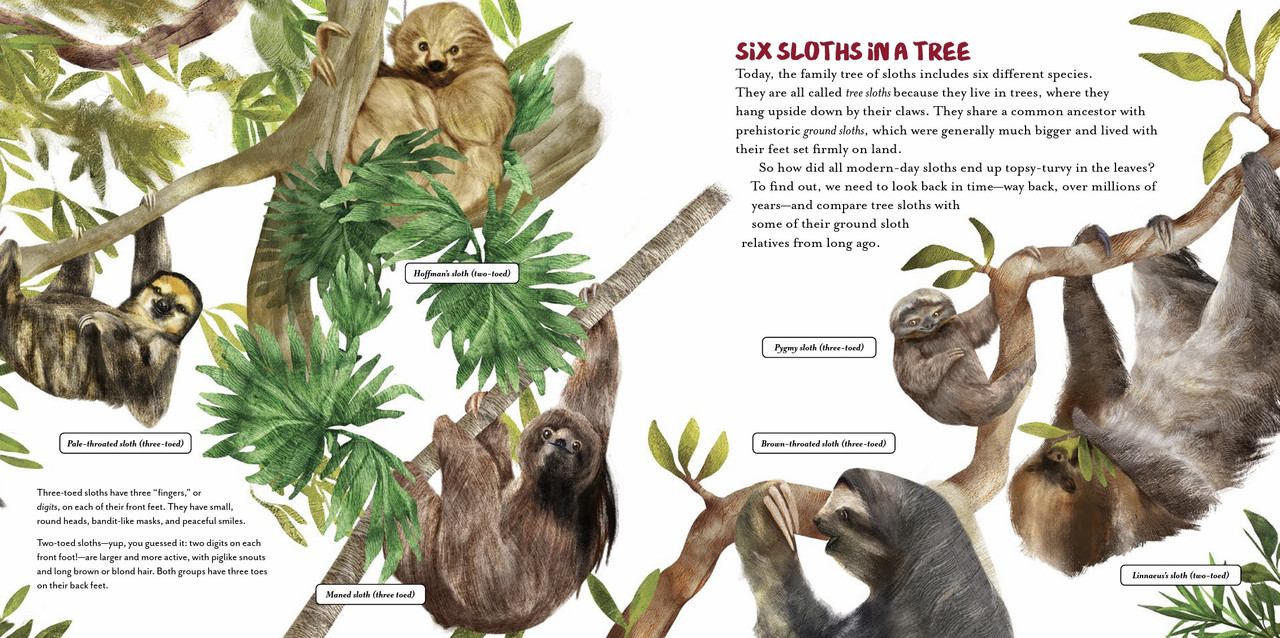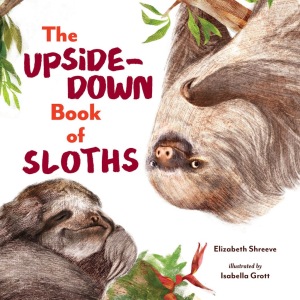Illustrations – Isabella Grott
This book is a lovely introduction to the six types of sloths that live in Central and South America as well as some of the dozens that used to walk the earth (and in one case swam the sea) millions of years ago. Comparing the three-toed sloths with their “bandit-like masks” and the larger two-toed sloths to those we have learned about through their fossils, we discover how they live, sleep, raise their young and poop.
While I’ve yet to meet a sloth, I’ve read about them, fallen in love with some cuties I’ve seen in documentaries and have bought my mother, who adores them even more than I do, all manner of sloth merchandise. Did you know you can buy sloth bandaids?
This was a quick, enjoyable read that taught me some new fun facts. My top three are:
🦥 The largest tree sloths grow to 32 inches (81cm) and weigh up to 24 pounds (10.9kg). That’s tiny when you compare it to the Megatherium, a giant ground sloth, that lived 10 million years ago. It grew to 18 feet (almost 5.5m) and weighed around 8,000 pounds (3,628kg)!
🦥 Sloths move about 13 feet per minute through trees and about one foot a minute on the ground. They’re good swimmers, moving three times as fast in the water than they do on land.
🦥 It takes more than a month for a sloth to digest a meal.
Isabella Grott’s illustrations are gorgeous, showcasing species both past and present.

Kid me definitely would have borrowed this book from the library for a school project.
Thank you so much to NetGalley and Norton Young Readers, an imprint of W. W. Norton & Company, for the opportunity to read this book.
Once Upon a Blurb
Slow, sleepy — and adorable. This playful and informative picture book follows the fascinating history of one of the world’s most beloved animals.
Many find sloths cute, while some find them just plain bizarre. In The Upside-Down Book of Sloths, Elizabeth Shreeve uncovers their less-well-known evolutionary history and how they became the beloved — and unique — creatures of today. She pairs and compares the six extant modern species, like the pygmy sloth, the brown-throated sloth, and the ai, with their prehistoric counterparts, such as Thalassocnus, the tough seafaring sloth; Paramylodon, which had armor-like skin and walked on the sides of its feet; and Megatherium, which could weigh up to 8,000 pounds. She even reveals how modern sloths have adapted to hang upside down, how they learned to swim, and even how they poop!
As entertaining as it is educational, The Upside-Down Book of Sloths offers a brilliant deep dive into sloths, their evolution, and their connections to our planet’s natural history — and future.
